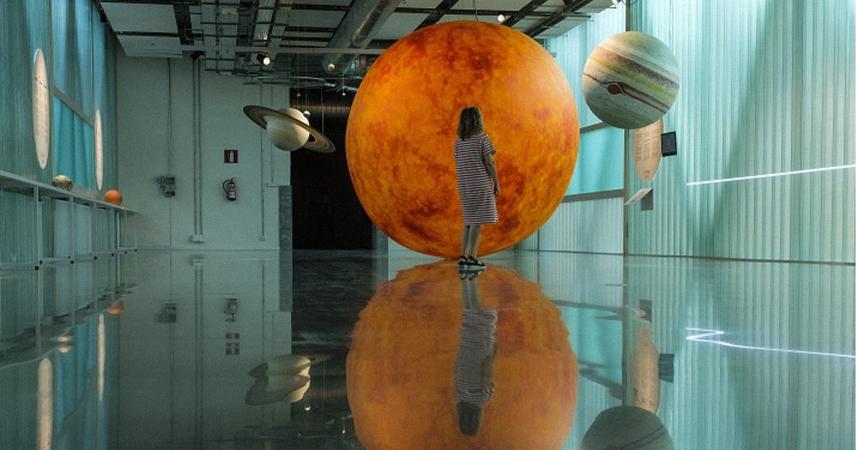‘STROM - Inclusive Astronomy’ invites us to explore the universe through a didactic, interactive, multi-sensory and inclusive journey that unveils fundamental concepts of astronomy and the cutting-edge research that is being carried out in the field of astrophysics.
‘STROM - Inclusive Astronomy’ is organized by the Donostia International Physics Center (DIPC) within the framework of the Passion for Knowledge Festival, whose principles are cutting-edge scientific research and excellence in outreach.
One of the main goals of this exhibition is to ensure accessibility, understood as the removal of barriers for different audiences, especially the visually and hearing impaired communities and people with reduced mobility. The inclusive materials for this exhibition have been created under the guidance of institutions and professionals who work with persons with disabilities.
The exhibition is divided into two halls, one focused on our solar system, and the other dedicated to exploring the limits of the known universe.
In the first hall, the one we are in, we will find out about the process of how the solar system was formed, as well as the composition, scale and distances between our neighbouring planets. We will also be able to feel the texture of the different types of planets, we will have to guess the real distance between the Earth and the Moon, and we will listen to the sounds of the various layers of the Sun, represented by a large sphere with a diameter of 3.3 metres in the center. Do you think that the planets hanging from the ceiling are small in comparison with the size of the Sun that shines in the middle? Well, just be aware that we have had to reduce the Sun to a third of its relative size so it could fit into the room.
Before you start the tour, we recommend you to take a moment to get to know the accessibility systems used at the exhibition. In front of each explanatory panel, a touch screen shows basic information in Braille about where we are. Certain embossed QR codes provide us with access to a visual and audio guide which provides more information about each section, which is available in Basque, Spanish and English. To access the visual/audio guide, point the camera on your mobile phone or electronic device at the QR code, press on the link that appears on the screen, select the language, and then choose the visual or audio option.
The tour is marked out by embossed floor-guides and podo-tactile warnings on the floor that will guide you through each section from the entrance to the exit.
The exhibition has no physical barriers that may obstruct circulation in a wheelchair. In case you need, there is a wheelchair available in the exhibition entrance.
We hope you enjoy the experience.
